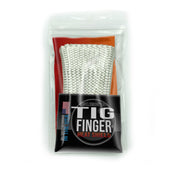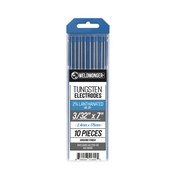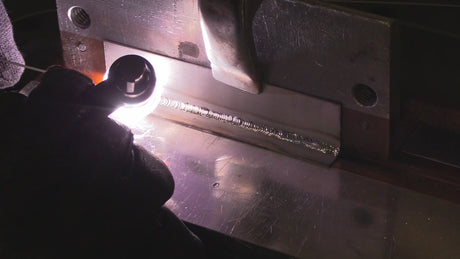Here is another video with lots of great tips for TIG Welding Stainless SteelHere's some Tips for Passing an Aerospace Weld Test
specifically a Stainless Tee Joint
- Clean metal and filler wire with acetone
- Use a newly sharpened Tungsten
- Use a tight arc length and avoid big steps between filler metal dabs
- keep the hot tip of filler wire shielded with argon
The welding specification for aerospace welding is AWS D17.1 D17.1 replaced mil std 1595a and when that happened the tolerance for lack of fusion in fillet weld test joints on .063" and thinner was made much tighter.
That makes a Tee joint fillet weld test on thin stainless a real exercise in puddle control to achieve fusion into the root, but not melt thru the back side at all on .063" and thinner.
.063" stainless is relatively easy not to melt thru but when you get down to .040" and thinner, things get more difficult.
In this video, I used .063" 304L stainless for a practice joint.
An aerospace weld test would most likely use 17-7ph or 15-7ph for qualifying a welder for group 2 iron based stainless alloys. But 304L is easier to find and way cheaper and still makes for good practice.
Back in 2004 I was working at a maintenance repair center for a major airline training and certifying welders.
We sourced some cups similar to the MK14 you saw used in this video and those cups worked great but were as delicate as eggshells.
The MK 14 cup is much more durable and works the same as those specialty cups I ordered years ago.








1 comment
i am 74 and still learning, these short videos are brilliant keep up the good work many, thanks Doug